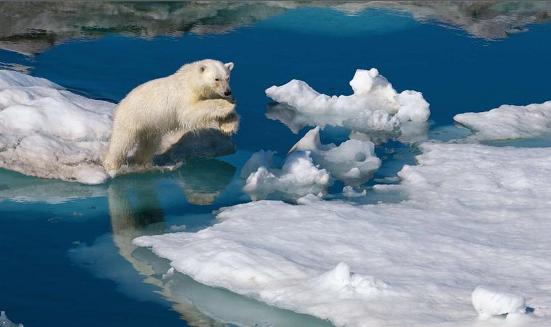
Luckily, he found another way to share the stories of the polar ecosystems that are his lifeblood: he has learned to visit with animals and to take pictures. The job sounds much simpler than it is. In order to tell the stories he wants to tell in Polar Obsession, our latest Notable Narrative, Nicklen allows a leopard seal—an animal not above killing humans—to take his head and camera in her jaws underwater.
He keeps company with polar bears, which have been mauling intruders for more than 400 years. He makes it a habit to stay in polar seas to shoot pictures until he cannot feel his limbs. He has sustained permanent damage from cold and frostbite.
Seeing his pictures in National Geographic does not provide this background. Yet his commitment to an overarching narrative comes across in each image of the animals whose pictures he takes—animals whose existence is threatened by a temperature increase that remains abstract to so many of us. Though many of the pictures celebrate the lives of these animals, the realization that they are at risk transforms the polar light and the isolation of the landscapes, tapping into an undercurrent of loss.
Nicklen acknowledges that it can be hard to care about krill, or sea ice. However, he believes that he might motivate us to action by showing the creatures that could fall victim to more advanced stages of the disease just beginning to afflict the planet. Nicklen has learned that the medicine of what needs to be done goes down better with a beautiful story.
[For more, read our interview with Nicklen, in which he talks about the most wrenching story he’s done (“I’m still messed up over that”) and explains how storytelling goes beyond taking pretty pictures of animals. The images on his siteare uncaptioned, but captioned versions can be seen on the National Geographic and NPR Web sites.]


